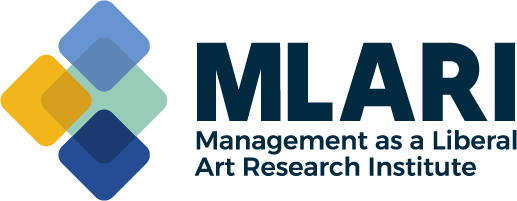Next Steps in AI, Mobility and Sustainable Nearshoring
PUBLISHED:
Photo: Mexican Industrial Chambers and federal authorities, among others: Alex Theissen, President of the ANTP; Alejandro Malagón, Secretary General of CONCAMIN; and Jose Abugaber, National President of CONCAMIN.
Last week I had the pleasure and honor of participating in the National Freight Transport Forum of the National Association of Private Transport (ANTP), a Mexican corporation that groups and represents companies that produce cargo. The Forum had a concept that I really liked, as it integrated "transforming logistics and freight transport for the commercial challenge," focusing on human capital, nearshoring and artificial intelligence, "AI."
The challenge and central point is to have our own fleet or to be providers of goods transfer (transport) services, where we seek to contribute to the integral development of cargo transport systems and their environment, so that they are competitive and sustainable. The focus of the conversation was how to ensure that a means to provoke a sustainable link is found throughout the chain to promote electric transport within multiple initiatives, operational efficiencies, optimizing and reducing in all possible ways the emissions that are caused by moving a product from one point to another, and how the electrification of transport plays an important role in achieving the objectives of decarbonization of the economy.
In my case, this is the third time that I have participated in the 23 years that the Forum has been held, and I remember that from day one it positively featured a panel that made me connect with many issues on which we have to move faster, as it evokes the use of AI applied to efficiency in mobility, where although the technology has been available for years, there is no progress in its implementation. The manufacturers of heavy goods vehicles agreed that the incorporation of AI solutions in the units would be beneficial, since it accompanies the operator from the cabin and detects actions that could threaten their safety. I have had the opportunity to test the technology firsthand on test tracks and what already exists on the market is impressive—literally in times of danger the unit takes control to protect everyone.
During the Forum, the ANTP asked the authorities to remove cargo trucks that are more than 20 years old from circulation, seeking to make the transfer of goods more efficient and profitable. Let's just take into account one shocking fact: 20 trucks over 20-25 years old pollute as much as 1 single truck, but with recent technology, said data was a focal point to emphasize urgently moving forward in a program of staggered change of units, thus seeking to progress more quickly.
Strengthening logistics and digitalization are pressing needs in the era of sustainable nearshoring, where the urgency of strengthening Mexico's logistics chain and the adoption of technologies to perform processes in the sector more efficiently is placed at the center of the agenda; we have a great moment to take advantage of when considering the MUCH lower footprint in the comparative supply of Mexico vs. Asia, but we must recognize that we have expensive logistics, which complicates the implementation of nearshoring on a large scale.
In human capital, examples were presented where programs were initiated to recruit more and more female drivers of units, where it is urgent to make greater progress in the numbers and percentage of women participating in the sector, accompanied by more training for greater efficiency in the management of the unit, along with safety, which always comes first.
In terms of technology leveraged predictive maintenance, it will be essential to optimize the entire process and proper functioning of the units we have in Mexico; state-of-the-art technology and impressive announcements of new electric vehicle charging fleets should not be discarded.
According to the industry leaders who presented the breakthroughs, it will be critical to prepare for what's to come:
· Modernizing the fleet.
· Identifying the type of uses they may adopt first (based on kilometers traveled, type of routes, cargo, etc.).
· Performing pilot tests to adapt the availability of vehicles with the type of operations (especially in terms of autonomy and yields).
· Being essentially “early adopters” in AI in transport.
As I get to know the industry more closely, beyond my position in the plants that I had the opportunity to enjoy for more than 10 years, within coordinating the production and logistics control of steel and aluminum can plants from Baja California, now the advances must be supported with intense training of human capital and sustainable nearshoring. This includes the border states that already have everything ready to go, but many more states and regions of Mexico must capitalize on this hand in hand with the AI, optimizing loads, closing travel circle and above all, taking advantage of Mexican talent and ingenuity, all of which combined will provide the conditions to really see exponential sustainable growth in the region.
In the equation we have experts in mobility, AI and proximity to the most important markets on the planet, now we just need to add more sectors so that it becomes sustainable mobility and expand the use of green technologies, increase electric charging points, and adopt more technologies that we require for different transport routes, such as land, air and sea: In Mexico we can become leaders in all areas of sustainable integral mobility!
Reference sources:
· Mundo Ejecutivo: https://mundoejecutivo.com.mx/opinion/siguientes-pasos-en-ia-movilidad-y-nearshoring-sostenible/
· Wokii News: https://wokii.com/inteligencia-artificial-ia-movilidad-y-nearshoring-sostenible/
· Empresability: https://movimientors.ning.com/acciones-sostenibles/siguientes-pasos-en-ia-movilidad-y-nearshoring-sostenible?xg_source=linkedin
· El Capitalino: https://elcapitalino.mx/opinion/acciones-sostenibles/siguientes-pasos-en-ia-movilidad-y-nearshoring-sostenible/





